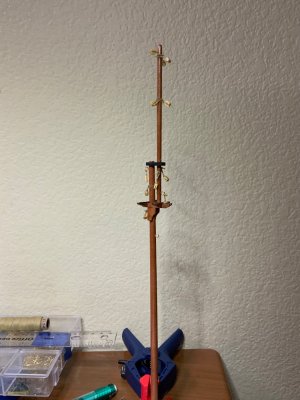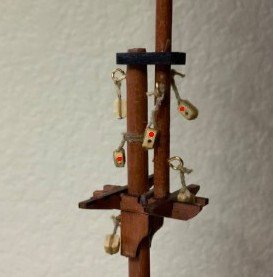My build of the Albatros continues. The rubbing strakes, limber boards, some pin racks, chain plates channel, cat davits, and railing have been completed. I need to get a drill attachment for my Dremel tool. Hand drilling with my pin vice is long and tedious.
Another hard lesson learned: when I was dry fitting the mast plates I also dry fit both of the masts and found they didn’t fit into the intended slots because of an alignment issue with the deck. I read a few steps ahead, but obviously not far enough. On my next build I’ll be sure to dry fit the masts before I glue down the deck.
I wasn’t able to complete the rudder because of some missing pins. I emailed OcCre and asked that they send out the missing parts.
View attachment 520995
View attachment 520996












